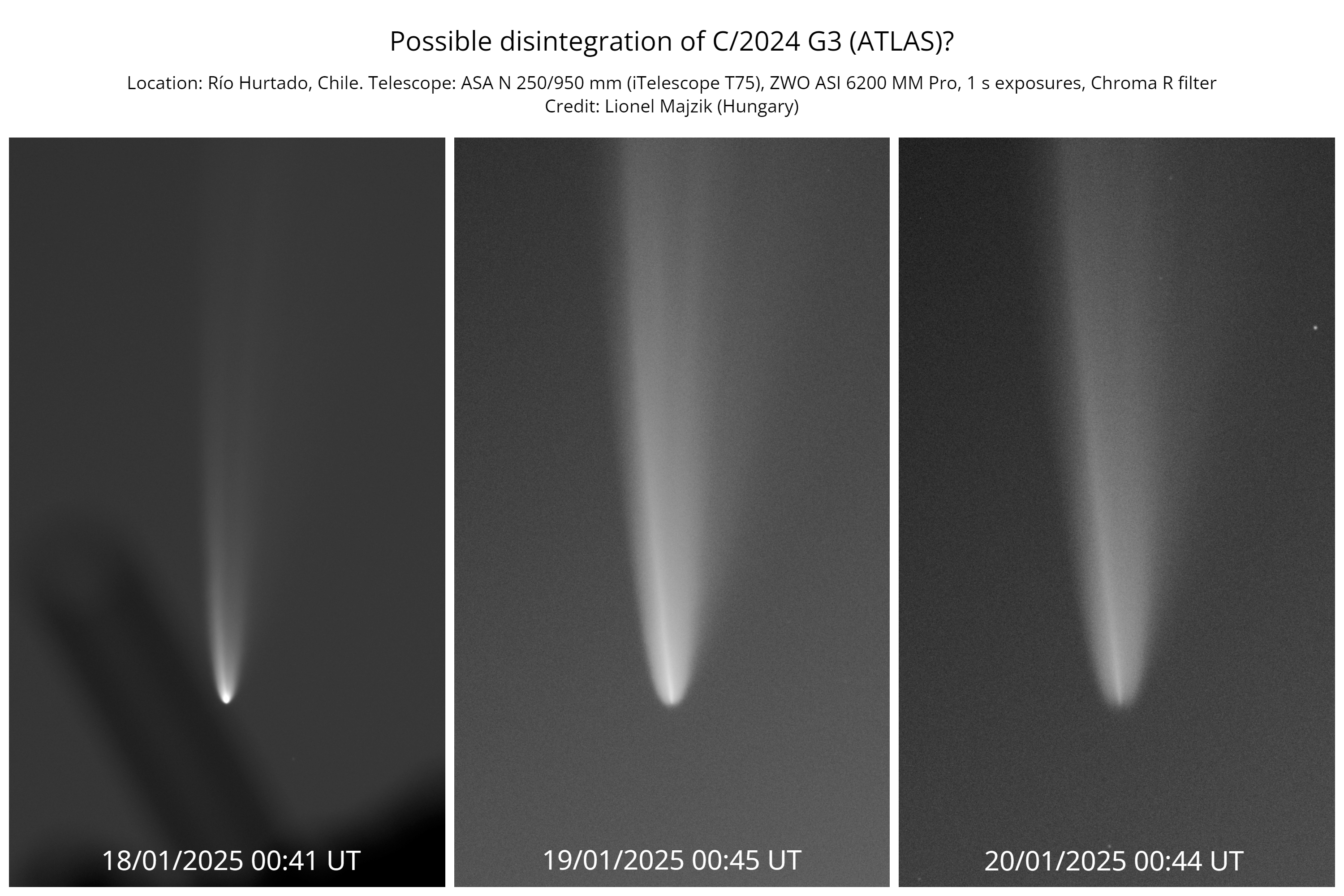Good News and bad News about Comet Atlas
"Comet ATLAS is surprising everyone in the southern hemisphere," says Mello.
Indeed, beautiful photos are pouring in from many countries south of the equator. "We were not expecting that!" marvels Noeleen Lowndes, who experienced the surprise of seeing the comet's tail naked-eye from Mt Tamborine, Australia. "It is was clearly visible to the naked eye," says Andres Molina of Bogota, Colombia. "This is one of the most incredible photos I have ever taken!" adds Gabriel Zaparolli of Jaquirana, Brazil.
Now for the bad news: The comet may be disintegrating. This sequence of photos from Hungarian astronomer Lionel Majzik, using a telescope in Chile, shows a troubling change. A bright streamer has appeared inside the comet's atmosphere, and the head is no longer the brightest object in the photo.

Only one week ago, Comet ATLAS passed very close to the sun (0.09 AU), deep inside the orbit of Mercury. The thermal stress may have been too much. Famously, a similar disintegration happened to Comet Lovejoy (C/2011 W3) after its close approach to the sun in Dec. 2011. Comet Lovejoy appeared to lose its nucleus ("the head") while still maintaining a visible tail. The streamer bifurcating Comet ATLAS's tail is evidence of a similar event. If so, it too could become a "headless wonder" in the nights ahead. Stay tuned!
